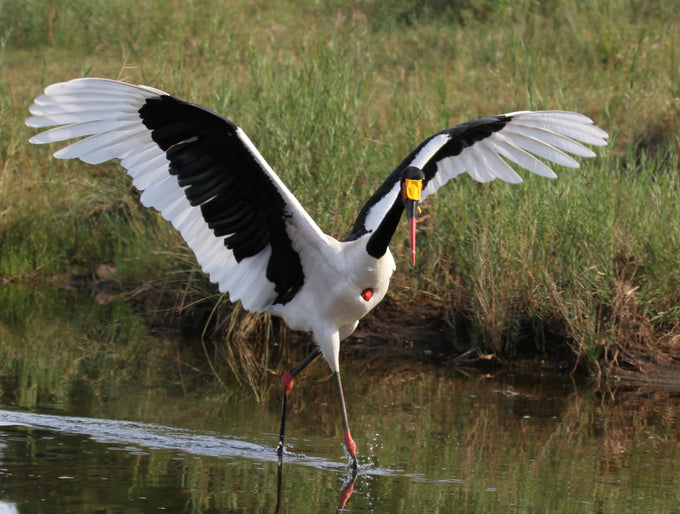
Saddle-Billed Stork
Share
The Majestic Saddle-billed Storks of Kruger National Park 🐦
Gaze across the waterways of Kruger National Park, and you might spot the impressive silhouette of the Saddle-billed Stork. This tall, vibrant bird stands out with its striking appearance and is one of the most visually spectacular residents of the park’s wetlands.
Vivid and Vibrant: The Saddle-billed Stork is easily identifiable by its bright red and yellow bill, which features a black saddle-shaped shield, giving the bird its name. They are among the tallest storks, with long legs and a striking black and white plumage that adds to their commanding presence. 🎨🌿
Diet and Hunting Techniques: These storks are skilled hunters, primarily feeding on fish, frogs, and small reptiles and mammals. They utilize their long, sharp bills to expertly snatch prey from shallow waters, often seen foraging along riverbanks or in marshes. Their hunting method involves standing still and waiting patiently before making a quick strike. 🐟💧
Breeding and Nesting: Saddle-billed Storks are solitary or found in pairs, especially during the breeding season. They build large nests high in tree canopies near water bodies, where both parents diligently care for the eggs and later, their young. This commitment ensures that usually only one or two chicks are raised each season, which receive a lot of attention. 🥚🌳
Fun Fact for Kids: Did you know that Saddle-billed Storks are often silent? Unlike many other bird species, they lack the typical vocal muscles for calling and instead communicate through bill-clattering when at the nest or during courtship rituals. 🔇🐦
Engage and Learn: As you colour in the Saddle-billed Stork on your Kruger Park roll, imagine the calm and concentration it takes to hunt in the waters of Kruger. This majestic bird embodies the grace and patience required to thrive in the wild, bringing a touch of elegance to the park’s diverse ecosystem. 🖍️📘